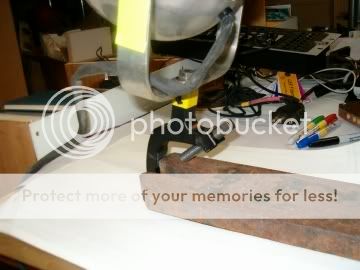If you don't have weights but can weld, take some 2" OD pipe and weld it into an H shape, with the cross piece above the two vertical pieces. It'll raise the cross piece 2" off the floor, then you can put your clamp on the cross piece. Trouble is, they are heavy.
I've also seen people use i-beams for this, cut to about 6" long.
FPLogistics sells a metal
base with a post that fits. Can't remember how much they cost.
I use wood. 5/8" ply with a
tee-nut countersunk in the wood. I make them 8" square, no feet. I never calculated the cost of them, but I'm guessing about $2.00 each, including paint.
The other issue with a floor
base if you're using an
LED is the data cables. On some units the bracket doesn't allow much clearance past it for the
dmx connections. So I took some 2" plumbing nipples at about $1.50 each and a longer
bolt. You could do the same thing by cutting a piece of
conduit to length or something. The ones in Bill's pix don't seem to have that problem. Unfortunately, the ones I own do.
As for clamping,
etc., my
LED pars get used 99% of the time for
uplighting, so they sit in the case with the
base on them. On site it's just a matter of cable.









